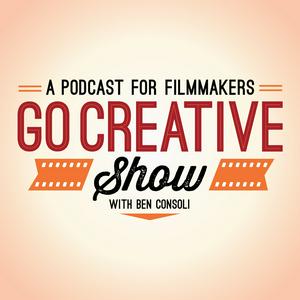Filming Incredible Oners with Adam Newport-Berra of The Studio
The Art of the Oner: In this episode of the Go Creative Show, acclaimed cinematographer Adam Newport-Berra joins us to discuss his work on the hit series 'The Studio'. Adam opens up about his process, the pressure and passion behind one-take sequences, lighting approaches, camera builds, and the philosophy that drives his visual choices. If you're into cinematography, collaboration, or breaking into the industry, this conversation offers both inspiration and tactical insight. 🎬 Topics Covered The storytelling power of long takes and why The Studio committed to the oner format Prepping like a maniac: location scouting, movement planning, and lookbooks Filming in a live Las Vegas casino The benefits (and madness) of shooting with one lens, one camera, no coverage Which celebrity cameo was Adam most nervous about... Spoiler...Martin Scorsese! Why embracing chaos creates more grounded and exciting performances Lighting for realism vs. stylization in high-glass, high-energy environments The artistic beauty of maximalism and intentional visual anxiety Balancing technical precision with raw human performance Why strong leadership and a positive set culture are essential for creativity Lessons on collaboration, adaptability, and protecting your inspiration outside of work 🎧 Key Takeaways A relatable script is the heart of great cinematography—it gives every shot purpose. Extensive prep is vital, especially when choreography, camera, and cast all move as one. The show's one-shot format pushed every department to be smarter, faster, and more creative. Working with a supportive crew makes bold risks possible—and fun. Technical constraints (like using a 21mm lens and the Alexa 35) unlocked visual freedom. Collaboration is everything: lighting, production design, and performance must all dance together. Performance always trumps perfection. Capture the moment—then make it beautiful. Spontaneity thrives when you're fully prepared. Your life outside film matters. Inspiration isn’t just on set—it’s everywhere. 🎥 Watch the trailer for The Studio 🎧 Subscribe to the Go Creative Show wherever you get your podcasts 📸 Follow Adam Newport-Berra on Instagram @adamnberra
